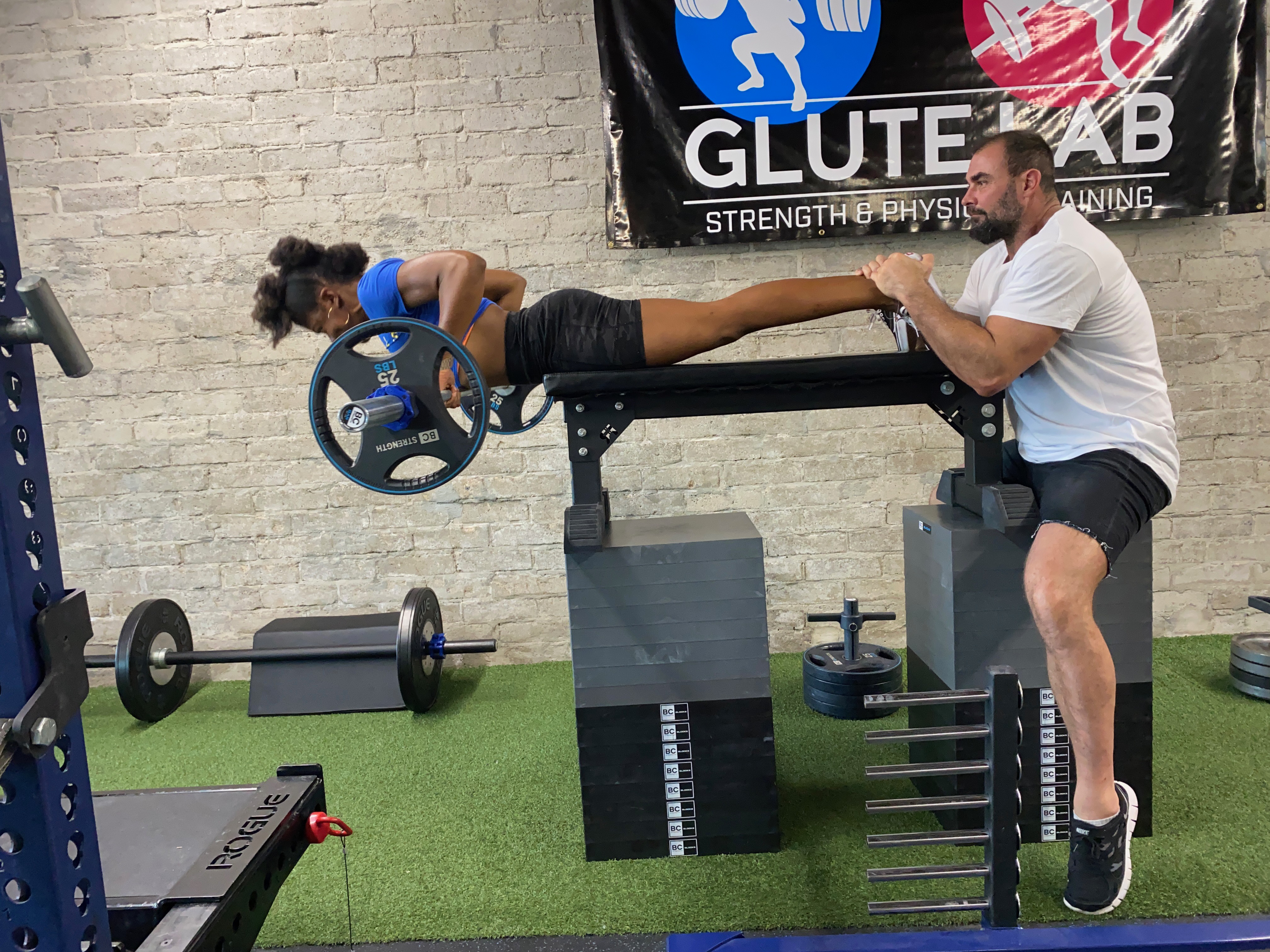If you’re new to strength & conditioning, you might find our exercise naming system to be quite confusing. Some exercises are logical in naming, for example a high bar full squat, or a prone rear delt raise. Some are named after countries, for example a Bulgarian split squat or Romanian deadlift. And some are named after people, for example an Anderson squat or a Zercher squat.
You may have noticed that there are a lot of exercises named after bros. Interestingly, I can only think of one exercise named after a woman, but here they all are…51 different exercises and variations named after people. It should be mentioned that there are many innovative folks in our field who came up with exercises but didn’t name them after themselves (for example, Dan John invented the goblet squat). Nevertheless, here is a comprehensive list of exercises named after their inventors, in alphabetical order. This is the very first article to compile all of them together and provide pictures of each movement!
Ahrens Press


This exercise was named after Chuck Ahrens, who was a very unique man. Click HERE to read about the legend. Truly insane feats of strength, and an even more insane style of training. From what I gather, his weight fluctuated between 275 and 350 lbs (6 feet tall), he was the only guy to make Paul Anderson look small, he didn’t train back or legs (just shoulders and arms), had some of the biggest arms and shoulders in the history of mankind (24″ arms, 66″ chest, and 28″ delt width), was all-natural, didn’t like competing, never took a pic with his shirt off, trained using very low reps even with arm exercises, didn’t seem to care about fame or popularity, and was probably the strongest curler of all-time (and one of the strongest triceps-extender and overhead presser). Anyway, he did these Ahrens presses (aka Y-presses) out of necessity because the adjustable dumbbells used back in that day were too big to press strictly overhead. They supposedly work the medial delt head especially well.
Anderson Squat
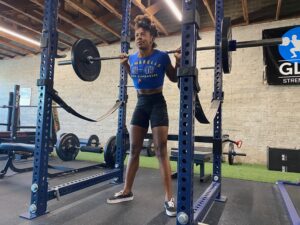

Olympic weightlifting gold medalist Paul Anderson developed the Anderson squat by digging a ditch to create a deficit for the weight to rest on the ground. He would stand in the hole in squat the weight up, then begin packing in the hole over time in order to increase the range of motion – this was known as “progressive distance training.” Click HERE to see training footage from the legendary giant.
The movement has evolved to utilizing safety catches in a standard power rack. The Anderson Squat is commonly referred to as a “pin squat”. To set the pins at the appropriate height, set them such that the bar is just above where it would normally be at the bottom of your squat. For ATG squatters, you’ll probably want to set the pins a bit higher and not perform these quite so ATG. Doing Anderson squats makes them much more challenging by removing the stretch reflex (actually, this is likely due to the molecule titan and its springlike qualities during an active stretch – see HERE to learn the science).
Sometimes you might hear of other movements that begin from the pins/rack or even when suspended from safety straps as “Anderson” variations, for example Anderson good mornings. Any movement beginning from the pins can be called an Anderson variation.
Arnold Press
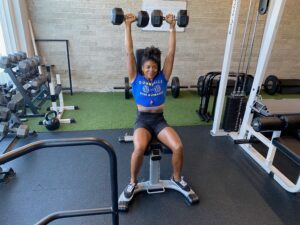

Named after legendary bodybuilder Arnold Schwarzenegger, the Arnold press was created after Arnold realized the traditional seated dumbbell shoulder press primarily hit the anterior deltoids, with some lateral deltoid recruitment, but next to no posterior deltoid recruitment. While pressing upward (combined shoulder flexion and elbow extension), Arnold added external rotation and transverse abduction into the movement.
With this in mind, it will still primarily hit the anterior deltoids and triceps, but with the added motion in the shoulder joint, you’ll hit slightly more posterior deltoids and rotator cuff musculature. Please take note that the Arnold press is NOT two separate movements of transverse abduction, followed by a traditional shoulder press; you are smoothly combining both actions at the same time throughout the range of motion. Click HERE to see a video on Arnold presses, and click HERE to hear Arnold himself discuss the Arnold press at 8:58.
Blackburns
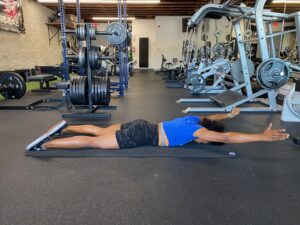
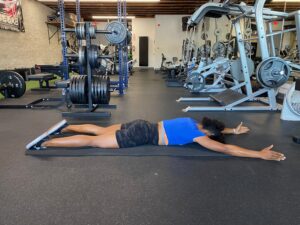
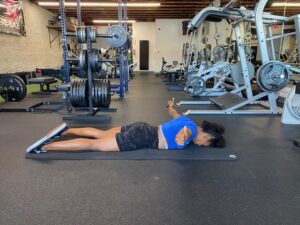
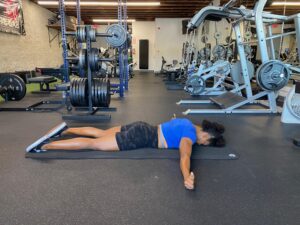


Blackburns are named after a rehab researcher named Turner Blackburn (click HERE to see one of his published articles). In virtually every video you find on the internet on Blackburns, you’ll see a different combination of prone shoulder exercises. In the pictures above, we show 3 positions (prone overhead scaption in external rotation, horizontal abduction in external rotation, and shoulder hyperextension), as I liked this sequence best. I was unable to locate the original document detailing the protocol, but one that comes up often (see HERE) consists of 6 distinct movements):
1: Prone overhead scaption with a neutral position
2: Prone horizontal scaption with external rotation
3: Prone horizontal abduction with a neutral shoulder position
4: Prone horizontal abduction with an externally rotated shoulder position
5: Prone horizontal external rotation with elbows at 90 degrees
6: Prone hyperextension in neutral
Commonly used as a rehabilitation exercise with just bodyweight, Blackburns can also be performed with dumbbells (click HERE to see a more advanced version).
Bradford Press
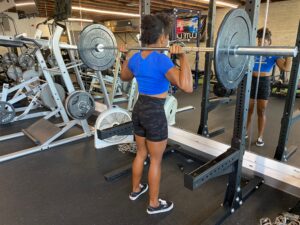
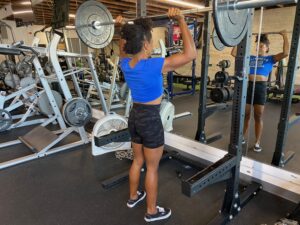
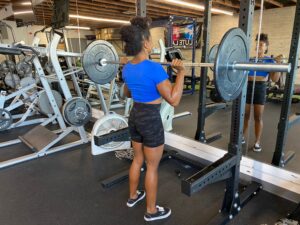
Olympic weightlifting silver medalist Jim Bradford was one of the best pressers of his day. With his extremely large deltoids, he was known to press in a variety of ways.
One such way became known as the Bradford press. The movement essentially alternates between a partial military press and partial behind-the-neck press. This variation can help to improve shoulder mobility and scapular stability, and more thoroughly develop the shoulders (due to the alternation between shoulder flexion in the military press and shoulder abduction in the behind-the-neck press. You’ll likely need to go around 10% lighter than your traditional military press, and note that you never fully lock the weight out; you just move up and around your head.
In the comments portion of THIS article, someone says that this was known as the circle press prior to Bradford doing them.
Burpee
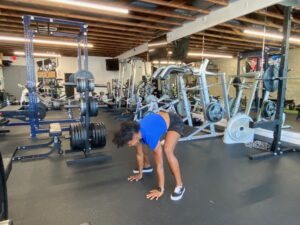
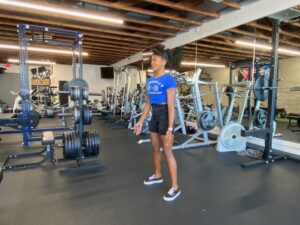
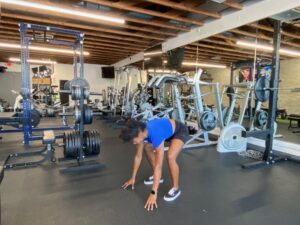
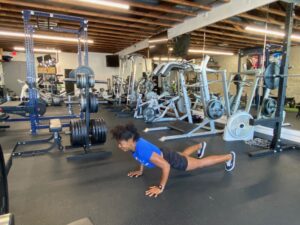
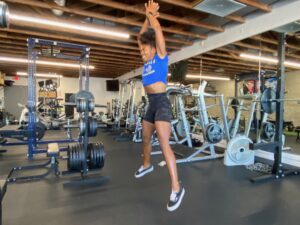
Royal H. Burpee was an applied psychologist who was way ahead of his time. He created an extensive list of physical fitness testing. Burpee wanted exercise to be catered to the individual’s interest, not just a matter of winning and losing, so in 1939, the burpee was created. There was actually no push-up in the middle, which was said to be later added in.
The burpee is notoriously loved by cardiovascular masochists. It is one of the most widely used bodyweight cardiovascular exercises used in HIIT protocols for its ability to rapidly elevate the heart rate by incorporating a large amount of the body’s musculature to carry out the movement.
Fun fact: Cameron Dorn has the world record for the most burpees in 24 hours. He did 10,105 of them and lost 10 lbs in the process (see HERE for a video).
Cook Hip Lift
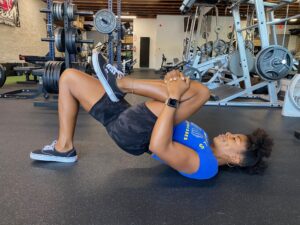
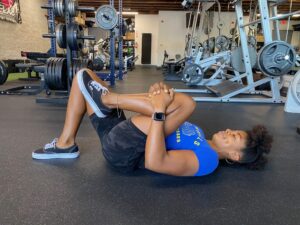
Physical therapist and strength coach Gray Cook popularized the Cook hip lift. The Cook hip lift is a single-leg glute bridge, but instead of having the non-working leg straightened, the hip is put into maximal flexion to prevent the lumbar spine from going into extension. Note that you hug the non-working leg to keep it tucked into the body. The spine will naturally flatten out so that the movement is pure hip extension with no accompaniment of anterior pelvic tilt or lumbar hyperextension.
DH Kickback
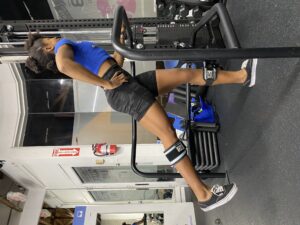
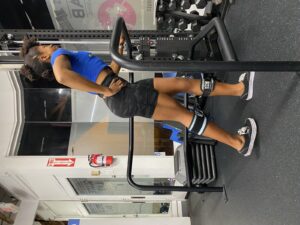
The DH kickback is named after bikini competitor Daraja Hill. She began placing the ankle cuff just below the knee instead of around the ankle, as she noticed that she felt her glutes working harder this way (makes sense). Notice that the kickback is also done with the cable traveling behind the grounded leg.
Dimel Deadlift

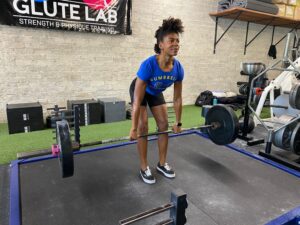
Westside Barbell Club (Ohio) founder Louie Simmons said that Matt Dimel was one of the strongest deadlifters he had seen. Matt popularized a unique style of deadlift.
The Dimel deadlift is like a Romanian deadlift, but performed explosively throughout the concentric action with a violent lockout characterized by pushing the hips through. You should hear the plates rattle at the top of the movement. Use 30% of 1RM for 3 sets of 20 reps.
Gironda Belly Row


Vince Gironda, also known as “The Iron Guru”, owned the legendary gym, Vince’s Gym, and helped to train other legends of the bodybuilding world, including Arnold Schwarzenegger. He had very unconventional views for tradition bodybuilding, which led to him landing 7 exercises on this list.
To perform the Gironda belly row, lie prone on the floor or on a bench with the cable directly out in front, level with the body, and the hands pronated using a short straight bar. Begin by pulling the cable toward the head (as in a pulldown). Once the bar approaches the head, hyperextend the spine and raise the torso. Finish off by rowing the bar towards the chest.
Gironda Body Drag Curl
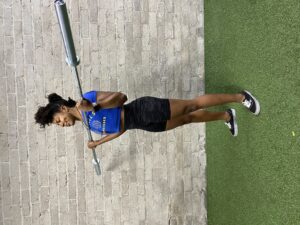
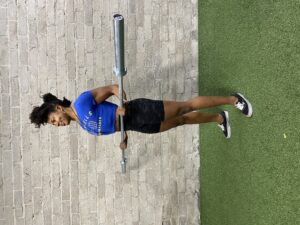
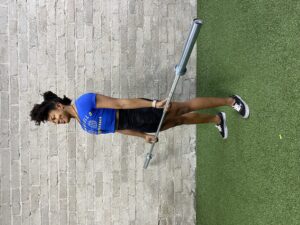
Another exercise that Gironda liked to perform is the Gironda Body Drag Curl. To perform the movement, you slide the bar up your torso, keeping your elbows back to prevent the anterior delta from kicking in. You’ll need to go markedly lighter than normal to carry out this movement.
Gironda Dip
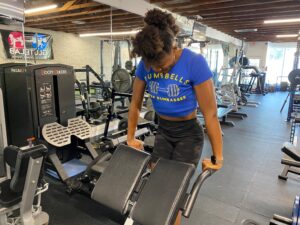
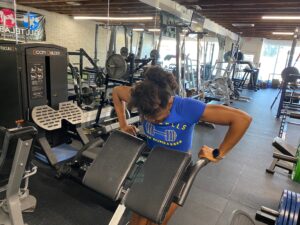
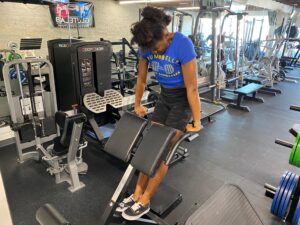
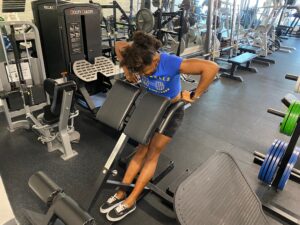
Gironda thought the barbell bench press hit far too much anterior deltoids to be considered an effective chest exercise. Instead, he would use a unique, tall, V-shaped dip bar to perform specialized dips by flaring his elbows out as wide as he could, using an internally rotated shoulder position to allow for more elbow flare. He also tucked the chin, rounded the upper back, and allowed the legs to travel forward. This variation hits the chest exceptionally well, but definitely ease your way into it. Click HERE to watch them done on the original Gironda dip apparatus.
Gironda Hack Squat
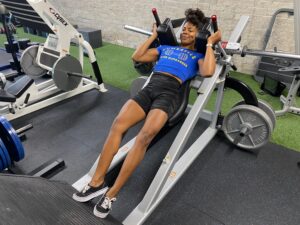
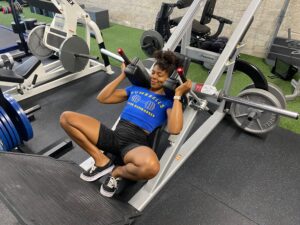
Similarly, Vince Gironda thought the barbell back squat hit far too much glutes to be considered an effective quad exercise (a problem I wish were true!). The Gironda hack squat, which he referred to as the “thigh squat”, is similar to what Tom Platz did to develop his shockingly big quads. The Gironda hack squat has you going onto your toes and pushing your knees forward and outwards, letting your hips drop straight down beneath you. Click HERE to see Vince’s actual hack squat unit from way back in the day.
Gironda Lateral Swing

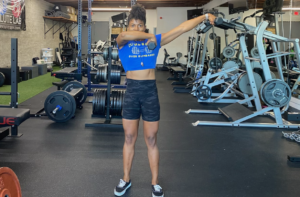
The Gironda lateral swing, also known as a Zorro, alternates humeral adduction (your typical lateral raise) on one side along with shoulder internal rotation and humeral abduction on the other side. Gironda believed these to be the best for deltoid development. Click HERE to watch them being done by a Gironda disciple.
Gironda Neck Press
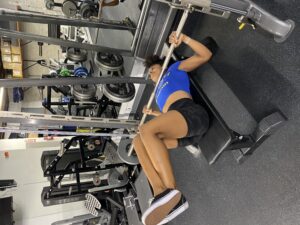

The Gironda Neck Press, also known as the guillotine press, is a highly effective pec exercise. If you’ve been in the Iron Game for long enough, you may have noticed that bodybuilders tend to bench substantially differently than powerlifters. Indeed, bodybuilders will keep their backs flat on the bench and flare their elbows wide while benching because their primary goal is to work their pecs. On the other hand, powerlifters will arch their backs as much as possible and keep their elbows tucked in order to shorten the bar distance and better-recruit the front delts and triceps.
The Gironda neck press exaggerates the bodybuilder-style bench press by flaring the elbows out as wide as possible (almost perpendicularly from the body) and lowering the bar to the neck. It can be performed on a traditional bench or on a smith machine, with or without a slight incline. Keep the legs up, criss-crossed to eliminate any leg drive or arch, and use a wide grip.
In 2008, I measured the EMG activity of numerous pec exercises and found that the guillotine press elicited insanely high levels of mean and peak activation for the upper, lower, and mid pec fibers. It is imperative to ease your way into this exercise as it annihilates the pecs and can irritate the rotator cuff musculature.
Gironda Perfect Curl
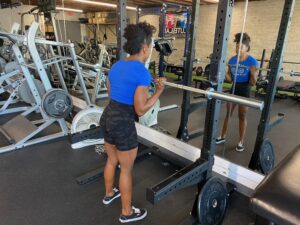

The Gironda Perfect curl isn’t all that different from your traditional barbell curl. The idea behind this is to keep the elbows directly in line with the hips throughout the entirety of the movement. Start with your torso leaning back, then gradually lean your torso forward more to prevent your elbows from flexing as you flex your elbow. Be aware that this exercise takes some practice to get the coordination down pat!
Gironda Sternum Chin-Up
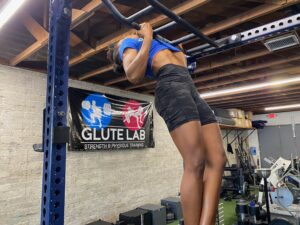

Gironda was very strict on form, and perhaps a bit stiff in his teachings. For chin-ups, he said your form was “worthless” if you were unable to touch your very lower sternum to the bar on chin-ups, since the lats extend your shoulders. Leaning back as you approach the top of the range of motion allows you to pull to terminal extension without your head getting in the way – you can almost think of these as a chin up/row/pullover hybrid movement.
Günthör Row
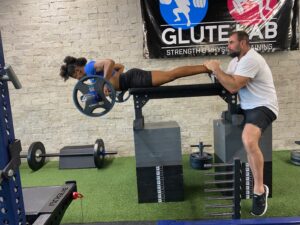

I’ve done these types of rows before. Hell, we were doing them back when I lived in Phoenix, Arizona at Revolution Training System (the owner Mike Peltz thought he came up with them). Later on, I found out that Swiss track and field Olympic bronze medalist Werner Günthör had been doing them with his coach several decades prior.
Simply put, the Günthör row is brutal. Don’t let the name “row” deceive you, these smoke the entirety of your posterior chain. You go through a large range of motion of hip extension, thereby working the hip extensors, while transitioning from a vertical pull to a horizontal pull. Sort of like a cable pulldown into a seal row. Watch him perform the exercise at 8:14 in THIS video.
Hack Squat
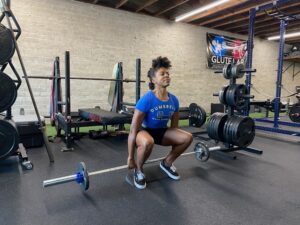

The Hack squat is commonly thought of as a machine squat. While this has come to be accepted, the hack squat actually originates from Estonian-bron wrestler, George Hackenschmidt (who also had a massive influence in creating the modern execution of the barbell bench press).
The hack squat is a great quad builder, especially for those of you training at home with limited equipment. Make sure to keep the bar in line with your back; don’t lean forward and allow the bar to swing forward towards the hammies. You can do this with the heels elevated or you can rise onto your toes as you descend, you can use a kettlebell or a barbell, and you can use more weight with less ROM with standard plates or use smaller plates which allows for more ROM but requires less weight to be lifted. Click HERE to see a pic of it being done with heavy weight and less ROM – notice how he allows his knees to travel far forward?
Haney Shrug
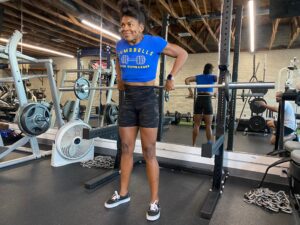
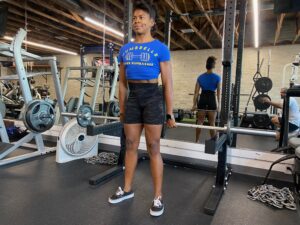
Popularized by 7X Mr. Olympia Lee Haney, who performed shrugs behind the back with his torso leaned forward (to get the glutes out of the way of the barbell path). Really these are more of a behind-the-back upright row as the elbows and wrists bend. Click HERE to see Haney performing them (go to 4:44).
Hatfield Squat
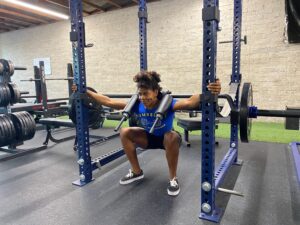
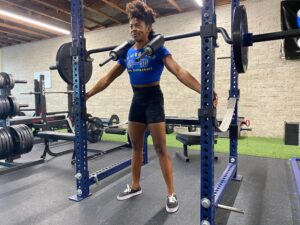


Frederick Hatfield, commonly known as “Dr. Squat” (as a PhD in sports science), popularized the Hatfield squat, as he developed the method when training off-season while trying to come up with a variation that worked his legs while sparing his back.
This movement requires the use of a power rack and a safety squat bar. There are several different ways to set this up, although Dr. Squat performed it in the first way shown above. You could hold onto the racks, T-pins, or even a racked barbell for support.
This variation serves as an enhanced eccentric, allowing you use greater load on the way down, then allowing you to use your upper body muscles to help assist with with the rising phase via shoulder extension against supports.
In my opinion, being stricter and not going crazy with the loading will transfer better to actual squats. Now we do a similar movement with lunges and pay homage to the inventor of the method by calling them “Hatfield reverse lunges.” Click HERE to see coach Josh Bryant explain and demo Hatfield squats.
Hise Shrug
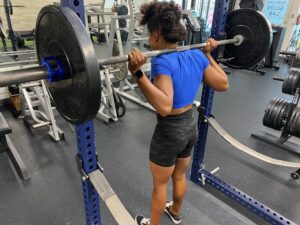

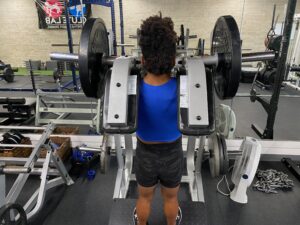
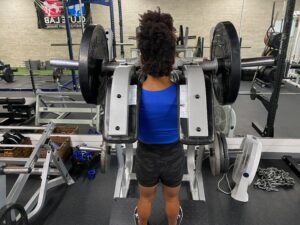
Invented by strongman and lumberjack JC Hise, the Hise shrug was originally done with a barbell, we more commonly see this done in either a lever squat machine or a standing calf raise machine (or even a smith machine). The movement doesn’t involve a large range of motion; just .5 to 2 inches depending on the relative loading. The old-timers typically performed 2 sets of 25 reps, supersetted with 15-rep pullovers. To carry out the movement, simply put the bar on your back in the high bar position and then attempt to shrug the bar up as high as possible (knowing that it won’t move much). This exercise works the traps, just like regular shrugs.
Hyght Flye

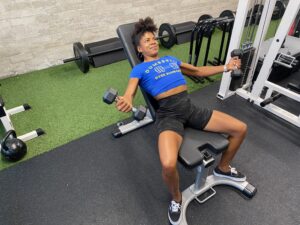
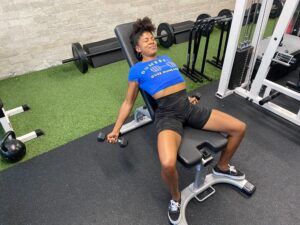
This variation of the dumbbell fly was created by Dr. Clay Hyght. This takes into account the pec’s fiber directions and actions, as it involves internally rotating the shoulder joint, while aiming to follow the line of pull for the of the clavicular head of the pecs. You’ll want a high incline on this variation (60 degrees or so), the path should form an upside down V, coming to an end right above the nose, with the pinkies approximating one another.
Jefferson Curl

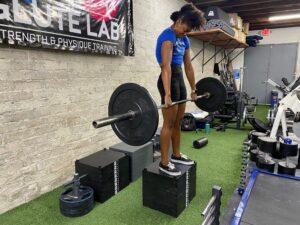

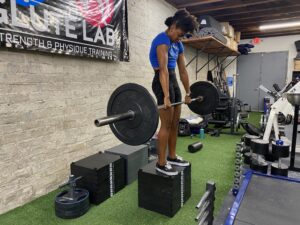
The Jefferson Curl (along with the Jefferson Lift) is named after circus strongman competitor Charles Jefferson.
The Jefferson curl is often written off as inherently dangerous, but I don’t think this criticism is fair. I’ve written a fair share about my thoughts on spine flexion and loading spinal flexion, which you can read about more HERE and HERE. The Jefferson curl isn’t intended to be loaded with maximal weight, or for exertion to be carried out maximally. This can help to strengthen the spinal extensors, improve hamstring flexibility, and rehab back injuries, and it should only be avoided if pain worsened from it.
Jefferson Lift
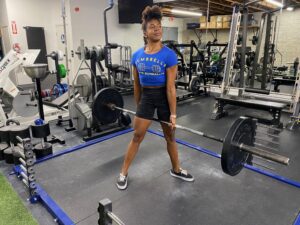
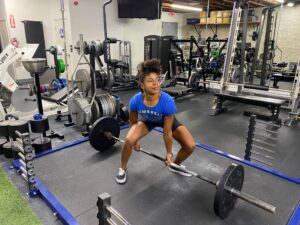
The Jefferson lift, commonly called the Jefferson deadlift, is a very popular glute builder amongst male bodybuilding circles due to Kai Greene resurrecting them (see HERE). They were also created by Strongman Charles Jefferson, just as the Jefferson curl. Although it may feel awkward initially, you will eventually get the hang of it. Squeeze your glutes at the top of the movement to lock out. You don’t need to go all that heavy on these for them to be effective.
JM Press
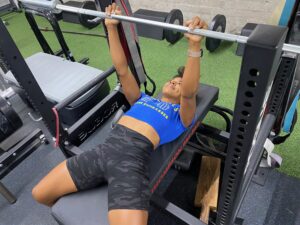

Named after former powerlifting world record holder JM Blakley, the JM Press is a direct cross between the close grip bench press and a skull crusher. These hit the triceps exceptionally hard, and are legendary for boosting bench press strength. I’m not gonna lie, I’m a HUGE fan of this movement. I’ve only been doing them for a few months, but I’ve gone from using 95 lbs to 155 lbs (only for 2 reps but still). My triceps have gotten noticeably bigger and my bench is the best it’s ever been. That said, I’ve found that not all of my clients can do them pain-free, so they’re not for everyone. Click HERE to listen to JM explain the movement. I learned by watching this video that I need to keep my elbows out more (45 degree angle), take a narrower grip, and “punch” more with the triceps.
Kegel
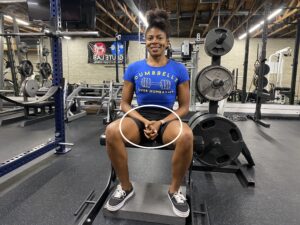
In the 1940s, gynecologist Arnold Kegel noticed that women’s pelvic floor muscles were weakened after childbirth. Pelvic floor muscles support the pelvic organs (bladder, bowel, and uterus) and when they’re weakened, it can lead to incontinence, sensation loss in the vagina, and vaginal prolapse. These muscles are like any other in the body and it’s important to strengthen them for the health of your pelvic organs. After almost two decades of researching, Dr. Kegel published an article detailing his method to strengthen the pelvic floor muscles without surgery to which he found success with thousands of patients. Here’s the protocol:
Once you’ve located your pelvic floor muscles, you simply contract the muscles for 3 to 5 seconds, then relax for 3 to 5 seconds and repeat for 10 cycles. To progress, you can extend the time of contraction. I won’t go into details, but it’s very important to perform kegels properly, as many women fail to do so. Good instructions vastly improve the outcome and biomechanics of the exercise (see HERE, HERE, and HERE). We weren’t sure how to capture this exercise on camera lol, hence the strange picture.
King Deadlift
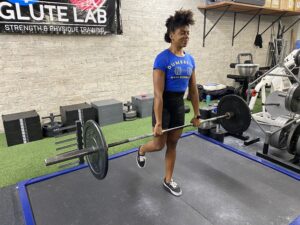
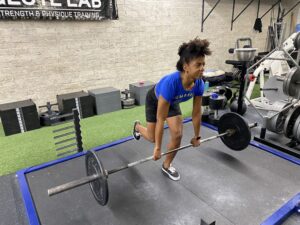
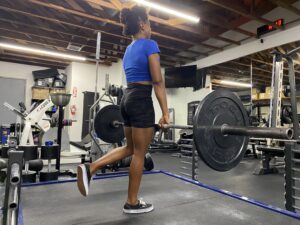
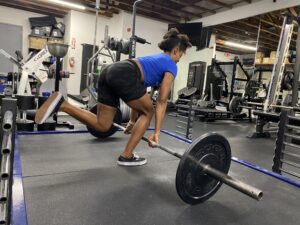
King deadlifts were popularized by Australian strength coach Ian King. Even though the word deadlift is in the name of this exercise, it’s essentially a weighted skater squat, so there will technically be more burden on knee flexion than hinging at the hips. The biggest difference here is that if you’re using a barbell with bumper plates, the plates will hit the ground before your knee does. Even bodyweight skater squats with full range of motion are very hard to achieve, so the addition of load with limited range of motion makes some sense.
Interestingly, even though skater squats are a knee-dominant exercise, it’s a great deadlift assistance lift. You would think you’re mostly using the hamstrings in the conventional deadlift, but you actually need a lot of quad strength off the floor to stay in good position (even more so in the sumo deadlift). The bottom of the skater squat (king deadlift in this instance) replicates this well, and the knee ROM is similar (more extended, top-range strengthening than what you see in most squat variants).
Klokov Press
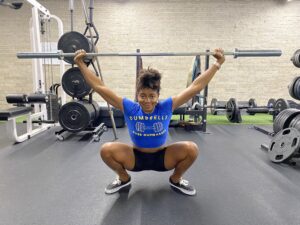
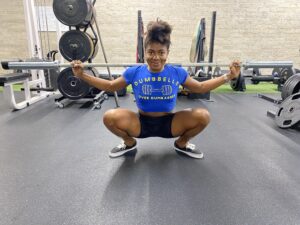
The Klokov press is really just a behind-the-neck snatch-grip strict press from either the standing position or in the bottom of a squat, but it was named after Dmitry Klokov (a former heavyweight World Champion Russian weightlifter) because he’s so fond of them and many people never saw them being performed prior to him).
The strict press with a wide grip will strengthen your medial/rear delts and upper back muscles, making this a great assistance lift for catching the bar at the top of the snatch. Click HERE to see Dimitry do a Klokov Press with 335 lbs.
Kroc Row


This one-arm row variation allows for a ton of body English was thought up by Janae Marie Kroc (formerly Matt Kroczaleski), a professional powerlifter and competitive bodybuilder who set the male world record in 2009 for the 220lb weight class lifting a combined total (squat, bench press, and deadlift) of 2,551lbs – needless to say, this is a very strong individual.
Janae came up with this to allow for high reps with extremely heavy load and as a result of this, it’s impossible to keep form strict. To a lifting novice onlooker, this variation would look like you’re trying to heave up a load that is much too heavy with terrible form. Since the load is so heavy, you have to use some momentum as well as some leg drive (especially when you’re not propped up on a bench) to get the weight up to the top of the rep. Although this is considered “cheating,” it’s done so in a controlled fashion (every rep looks the same) for a purpose.
Overall, if performed correctly, this movement achieves the same goal as any other row variation, you’re just incorporating a few more muscles in the body and you’re able to go heavier for more reps than you otherwise would with strict form. This is a great deadlift assistance lift because it hits your erectors as well as your lats and helps you work on grip strength with heavier loads (unless you wear wrist straps, which is fine too).
Larsen Press
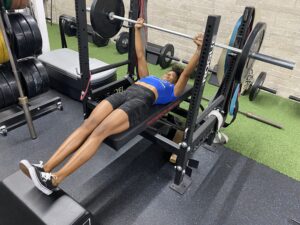

The Larsen Press is a bench press variation that has your legs hanging straight off the end of the bench, either with your feet hovering above the ground or propped up on another bench (usually off the bench, not like as shown in this picture).
Adrian Larsen, a bench press specialist who came up with this variation, was born with some lower extremity deformities that led to him having to have multiple corrective surgeries as an infant. This didn’t stop him from pursuing sports and weight lifting at an early age. As a result of wearing leg braces most of his life and still dealing with the struggles that came along with his birth defects, he had to find ways to approach standard lifts to accommodate his restrictions. In this case, keeping his legs elevated allowed him to get into proper position to bench press.
This variation will limit the arch you may be able to achieve with a standard bench press, but it allows you to focus on keeping your upper back tight throughout the set and not relying on the legs and feet to produce more force or compensate for poor form. Also, since you’re not able to use leg drive, this is a good variation to increase the difficulty of the bench press without adding more weight or to work on overall technique due to the increased stability demands. Click HERE to hear Adrian discuss the Larsen Press.
Meadows Row

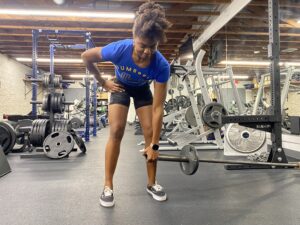
John Meadows popularized this modified one-arm row over a decade ago and credits this variation to the massive growth he saw in his lats over time.
Instead of using a dumbbell, he thought to grab onto the end of a barbell (you may want to use straps – you don’t want your grip strength holding onto something with a larger circumference to limit what you can lift) inside of a landmine device. Click HERE to see John demonstrating the movement. Keep the arm out as you row!
Pallof Press

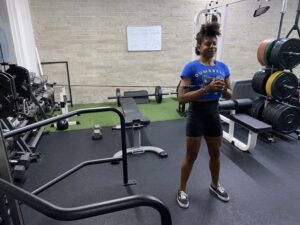
Physical therapist John Pallof introduced this exercise to the strength training community in the early 2000’s and its popularity took off (also called cable core press or the anti-rotation press), largely due to the rise in popularity of core stability training and unfair demonization of dynamic core exercises.
The Pallof press hits your entire core through resisting rotation as you fully extend your arms out in front of you (there are a lot of muscles involved in rotating the spine or preventing rotation in the spine), as opposed to many traditional abdominal/core exercises like crunches, which primarily work the rectus abdominis and obliques. This is a top notch exercise and a movement I prescribe often for my clients when they request direct core work. A cable column or band can be used, and you perform standard “reps” in that you’re not holding the position isometrically for time.
Pendlay Row

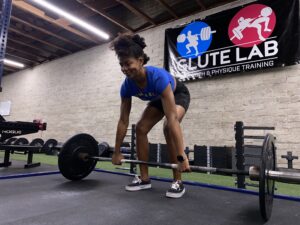
This strict bent over barbell row was invented by Glenn Pendlay, an American Olympic weightlifting coach. He came up with this in pursuit to further strengthen his back, which was his weakest point.
This variation is similar to a barbell bent over row, but there are distinct differences between the two. You’ll start from the ground with a slightly wider grip and explosively row the barbell to the belly button area. Your torso will be more parallel with the ground and the plates will touch down before pulling back up – this will engage your whole back and allow you to go heavier. Another difference is that Glenn Pendlay would round his upper back slightly off and initiate the pull, then extend the thoracic spine while retracting the shoulder blades and rowing up, but this isn’t required when performing this lift – it’s more of an advanced technique.
It’s easy to allow your torso to slowly rise throughout the set when the plates aren’t touching down to the ground with each rep, so I love this row because it keeps you honest and form on point. Click HERE to see Glenn discuss his row.
Poliquin Lateral Raise
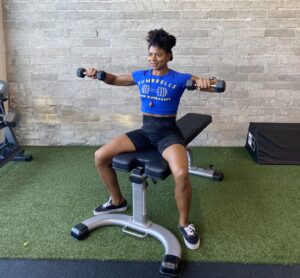
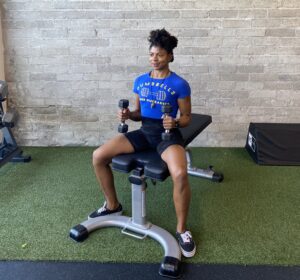
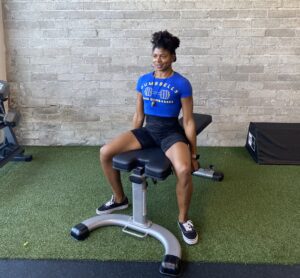
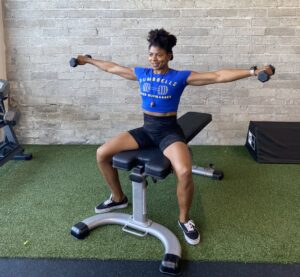
Strength coach Charles Poliquin popularized this interesting lateral raise variation. Starting in a seated position with db’s at the sides, first perform a hammer curls such that your elbows are at 90 degrees. From there, perform a lateral raise (concentric phase) with the arms at 90 (shortened lever). When you get to the top, extend the elbows (long lever), then perform the negative (lowering) phase. That’s 1 rep. Now repeat for the desired number of repetitions. Click HERE to see a video.
Reeves Alternating Row
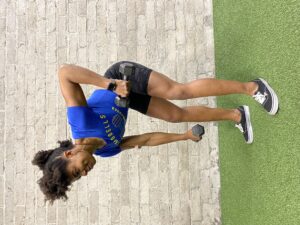
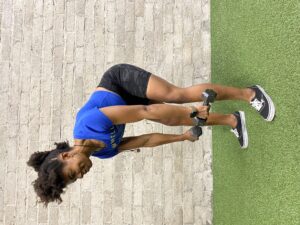
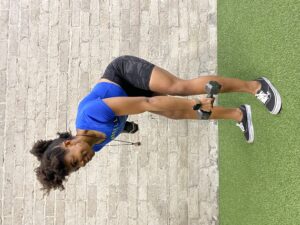

The Reeves row, not to be confused with a Reeves deadlift-style row where you use a wide grip and grasp ahold of the plates, is simply an alternating bent over single arm dumbbell row (not to be confused with a one-arm row). Vince Gironda was a fan of this row, which was named after the legendary bodybuilder Steve Reeves, who popularized them.
To perform the movement, simply get into a bent over row position, row one dumbbell up while keeping the other arm stationary, then reverse the process with the other arm.
Reeves Deadlift

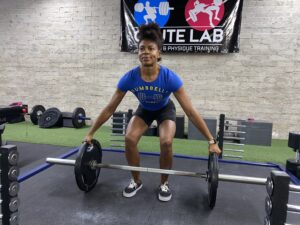
Steve Reeves was the former Mr. America, Mr. World, and Mr. Universe throughout the 1940s-1950s and had an absolutely incredible physique. He started deadlifting by holding onto the edges of the plates attached to the barbell. He believed this would hit his upper back super hard due to the extremely wide grip. Normally, this would be performed with deep dish plates, making them an awesome grip exercise as well.
If you’re looking for a deadlift variation that will incorporate more upper back muscle along with further improving your grip, I suggest you try this one out. However, you may want to use a narrower 15kg bar or a trap bar, and you may want to use plates with handles (THIS article discusses and demonstrates these options).
Saxon Side Bend

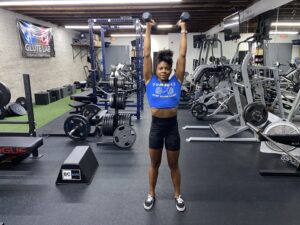
Over a century ago, Arthur Saxon (a 20th century strongman) performed these weighted side bends to help build his core. Holding the weight overhead makes this exercise more difficult. For this reason, you really don’t need much weight at all, and you don’t use a ton of ROM either.
Scott Curl
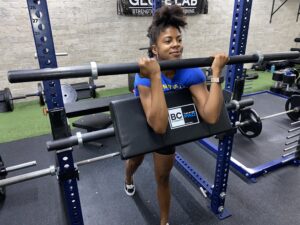
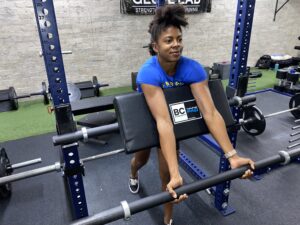
After Larry Scott won the Mr. Olympia in 1965, his methods of training started getting published in fitness magazines. One of his favorite exercises was a preacher curl (which wasn’t well known at the time), where you better isolate your biceps by fixing your arms onto a bench and performing the curl (Vince Gironda actually made a custom bench for this movement, which had you laying prone). Since Larry was the one to really popularize this technique, it was credited to him. So yes, the Scott curl is simply a preacher curl.
Scott Press
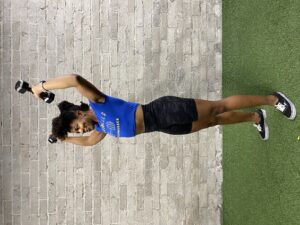
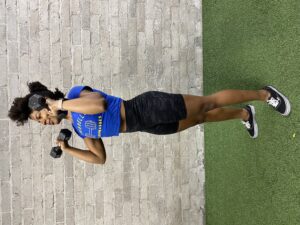
Also named after former Bodybuilding Olympia champion Larry Scott, the Scott press is a unique, challenging movement to get down pat. At first sight, it may seem like an Arnold press, but it’s more nuanced. It’s a partial ROM movement that is more of transverse plane than it is sagittal or frontal plane. It is thought to work more medial and rear delt than the traditional version. Keep the pinkies up and turn the elbows out as if you’re trying to tough them together behind your back. HERE is Larry demonstrating them.
Sots Press
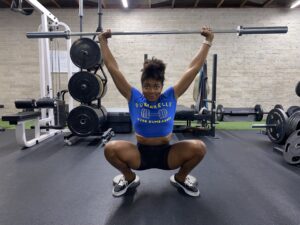
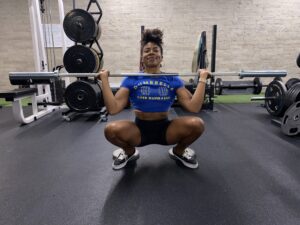
Named after elite world champion Russian weightlifter Viktor Sots, this overhead pressing exercise is exclusively performed from the bottom of the deep squat position (also referred as press in squat).
He became widely known for only using the squat jerk instead of the standard split jerk in competition. Although Sots originally pressed from a front rack position, you can technically perform this from behind the neck as well (similar to the Klokov press). This movement helps with shoulder, hip, and ankle mobility and is a great assistance lift for strengthening the receiving position with cleans.
Spoto Press
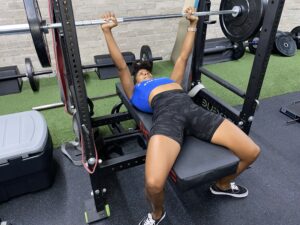
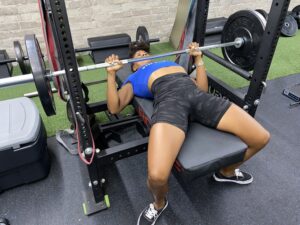
Eric Spoto, a powerlifter and legendary bench presser, popularized this bench press variation.
When I first started training people, I would see guys cut the range of motion short all the time and I would always try to correct their form, telling them to go deeper and touch their chest to get a full range of motion. But with the Spoto press, you’re intentionally pausing one to two inches from the chest before pressing back up. This actually makes the lift harder since you’re not relying on your chest for any sort of rebound to generate momentum on the way up – so it’s impossible to cheat with this technique. We’ve been doing tons of these at Glute Lab this past year and I believe it’s helped my squad’s bench press strength. Click HERE to see a video of how it’s performed.
Steinborn Lift


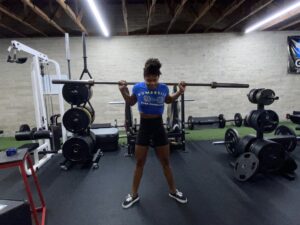
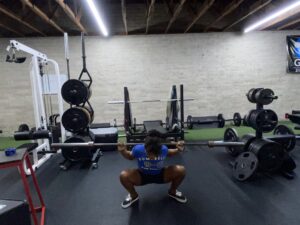
Henry Steinborn was one of the first squat specialists of his era (1920s). At this time, squat racks were yet to be invented, so he would perform unassisted back squats by tipping the barbell onto one side, placing it on his shoulders, and performing a lateral movement of the torso to get into starting position. He would unload the weight in the same fashion. He somehow lifted over 500 pounds with this technique which is insane.
This would be the better alternative to getting into position rather than having to clean the bar up then press it overhead to get onto your shoulders because you’re limited on how heavy you can go with the latter option. Click HERE to watch an amazing 565 lb Steinborn lift.
Svend Press
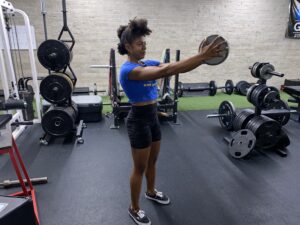

2001 World’s Strongest Man Svend Karlsen came up with the Svend press (aka pinch press) as an accessory lift to his bench press. It primarily hits your front delts and chest, just as any horizontal pressing movement would, but it works these muscles isometrically since you need to squeeze the plates (can use 2 or even 3 plates) throughout the whole movement. This will keep the muscles under constant tension. Since you’re limited on how much load you can use, it isn’t exactly a movement you’d be aiming for major strength improvements on, but can aid in pushing past a benching plateau. Whereas flyes primarily work your muscles in the stretch, Svend presses primarily work the muscles in the squeeze.
Tate Press
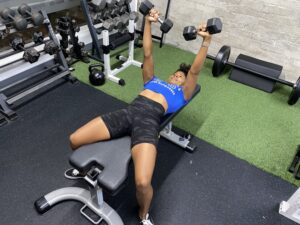
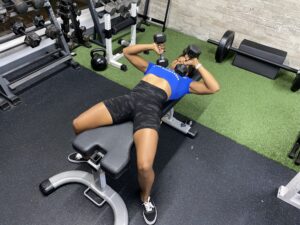
This unique triceps extension variation was popularized by Dave Tate – powerlifter and the founder and CEO of Elitefts equipment. He trained at Westside Barbell under Louie Simmons. Using a pronated grip, you want to keep your elbows out throughout the whole movement. This triceps exercise (also known as the elbows-out db triceps extension) is a great accessory lift for all upper body pressing movements. You can do them on a flat or inclined bench.
Van Dam Lift
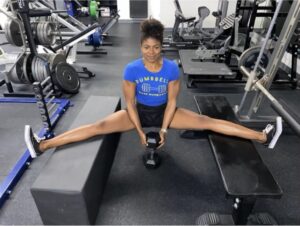
This is an interesting one that requires some serious adductor flexibility!
Rob Van Dam is a professional WWE wrestler who is responsible for this lift appearing in the USAWA (United States All-Round Weightlifting Association) Rule Book. This exercise has you lifting a heavy dumbbell off the ground to your waist while being elevated onto two benches in a full straddle split. This isn’t commonly performed anywhere, and it’s much more a demonstration of flexibility than it is of strength, but since it is a dynamic (albeit small range one at that) movement named after an individual, it fits the criteria of being mentioned in this article. HERE it is being performed.
Waterbury Crucifix
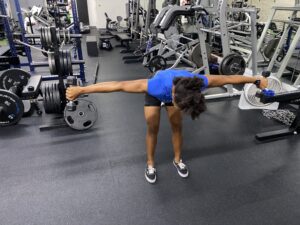
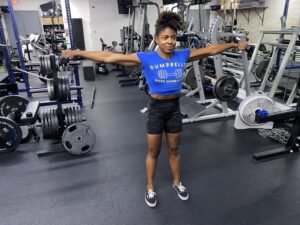
Chad Waterbury, an L.A. physical therapist, invented this delt isolation exercise. A standard crucifix hold involves holding db’s out to the sides for maximum time and works the medial delts very hard isometrically. If you bend over and hold the db’s outward, it works the rear delts very hard isometrically. By alternating between the standing and bent over positions, you end up frying your entire delt and upper back region.
Yates Row
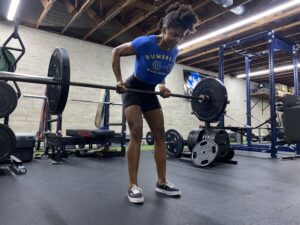
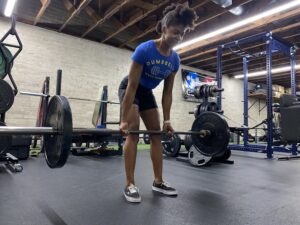
This underhand barbell bent over row variation was popularized by Dorian Yates, a six time Mr. Olympia winner with a killer physique and a seriously impressive back. He credited his back development in part to this movement. The differentiating factors in this variation is the more upright torso which will shift the emphasis to the upper back muscles, along with the underhand grip, which recruits more biceps musculature. Actually, in S&C circles, the Yates row is associated with an underhand grip, but Dorian Yates can be seen doing these both pronated and supinated. You can go heavier on this variant, since you’re not bent over as much as in a standard or Pendlay row. Squeeze the bar into the belly button and hold the contraction for a brief moment at the top before descending.
Z-Press


This overhead press variation from a seated position while sitting on the ground was popularized by Strongman Zydrunas Savickas. He would implement different variations when training for Strongman competitions to improve his vertical pressing strength, and this was a favorite.
By taking the legs out of the movement, it becomes a pure test of shoulder and tricep strength. On account of this, you will need to go significantly lighter compared to the military press. Feel free to position your legs more forward or outward to provide more stability.
Zercher Squat

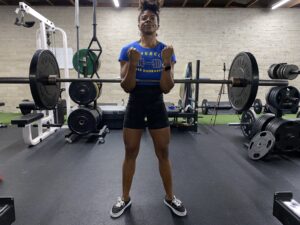
The Zercher squat was invented by Ed Zercher, a Strongman and powerlifter in the 1930s. He didn’t have access to much equipment while training, so he had to get creative with how to lift heavier loads. He didn’t have a squat rack so he thought the next best thing would be to hold the barbell in the crooks of his arms.
I did a bunch of EMG experiments back in 2008 and found that the Zercher squat elicited the highest glute and core EMG amplitudes out of all of the standing squat variations. So you may be thinking – why isn’t this the most popular squatting variation? It is such a convenient loading position, it just feels right being so close to your core. But the main drawback is that it hurts like hell and there’s really no way around it. People have tried to come up with ways to lessen the pain, such as boards, pads, or even special harnesses, but nothing seems to pan out that well for one reason or another. At Glute Lab, we like to perform Zercher style exercises with single leg squatting movements like step-ups because they require significantly less loading and will therefore exhibit much less pain in the arms.
Zottman Curl

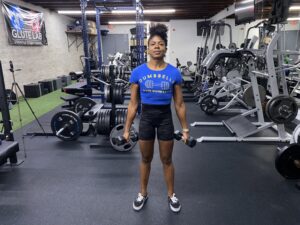

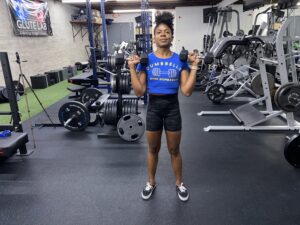
George Zottman, a 19th century Strongman known for his incredible arm strength, came up with this biceps curl variation.
You’ll hit your biceps during the concentric portion of the lift which is done supinated, but you’ll work more of your brachialis and brachioradialis as you switch over from supinated to pronated grip during the eccentric portion of the rep.
So there you have it! I’ve shown you 51 popular exercises named after people in one solid post. Thanks to Ashley Hodge for demonstrating. If you’re aware of any other exercises or know something interesting that I failed to include in the article, please leave me a comment and I’ll edit it. I didn’t include Smith Machine exercises even though they’re named after former bodybuilder Rudy Smith (who improved upon the machine that legend Jack Lalanne invented), because it’s named after the apparatus, but I may decide to include him in the main article down the road. Hope you enjoy the information!

